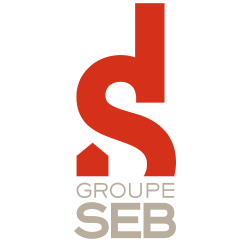
Concept
Rowenta and Moulinex are well-established brands in the home appliances industry. They had been selling their products through retailers but sought to explore a new market and increase revenue by establishing their own e-commerce platforms. Our mission was to assist them in implementing a comprehensive E-commerce strategy, encompassing website development, logistics, customer service, catalog management, and more.
Mission
Previously, Rowenta and Moulinex relied on retail partners to sell their home appliances. To tap into a new market and boost their revenue, they aimed to create their own direct-to-consumer e-commerce channels. Our role involved crafting a holistic E-commerce strategy, addressing aspects like website development, logistics, customer service, and product catalog management.
Challenges
The project presented several challenges that we addressed to enhance the overall user experience and competitiveness. Firstly, we optimized logistics for efficient parcel management and customer communication. Secondly, we focused on engaging content creation, offering a product guide and improved search filters to aid decision-making. Lastly, we worked on strategic SEO and a well-structured information hierarchy to improve platform visibility and gain a competitive edge.
Logistics and customer communication
The objective was to ensure smooth operations and effective communication with customers regarding their shipment status. By implementing an efficient logistics strategy, we aimed to enhance customer satisfaction and improve overall operational efficiency.
Consumer engagement
To better engage consumers, we focused on understanding their expectations and concerns. By gaining insights into their needs, we developed content that provided valuable information and supported their decision-making process. This included crafting a comprehensive product guide and implementing filters to optimize search results, making it easier for customers to find the most suitable products.
SEO and platform visibility
We worked on creating a well-structured platform architecture and information hierarchy, optimizing the platform’s visibility and favoring its ranking compared to competitors. By implementing effective search engine optimization (SEO) strategies, we aimed to attract more organic traffic and improve the platform’s overall online presence.
Design methodology
Research and analysis
- Conducting an ergonomic audit to assess usability and identify areas of improvement.
- Observing users and conducting interviews to gain valuable insights into their needs and pain points.
- Mapping user journeys and creating storymaps to visualize the user’s interactions and touchpoints.
- Utilizing treemaps to analyze and organize information effectively.
- Facilitating backlog workshops to prioritize and plan design iterations.
Ideation and strategy
- Collaboratively generating 20 sketches with the design team to explore diverse design possibilities.
- Developing a visual design guided by an artistic director, ensuring a cohesive and visually appealing interface.
- Conducting user tests using animated prototypes to gather feedback and validate design decisions.
Conception and visual design
- Applying the insights gained from user research to inform the conception and refinement of the design.
- Iterating on the visual design based on user feedbacks and testing results, aiming for optimal user experience.
